Maintaining proper oil pressure is crucial for the smooth and efficient operation of any vehicle’s engine. Oil pressure plays a vital role in lubricating the moving components within the engine, reducing friction and wear, and ensuring optimal performance. When the oil pressure drops below the recommended levels, it can lead to severe engine damage and potentially costly repairs.
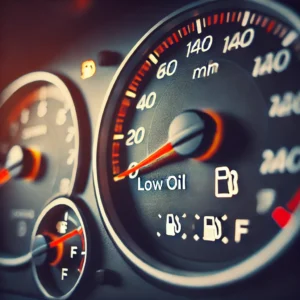
If you’ve noticed that your car has low oil pressure, it’s important to understand the causes and address them promptly to avoid serious damage and expensive auto repairs. Common reasons for low oil pressure include a low oil level, a worn-out oil pump, a clogged oil filter, or excessive engine wear.
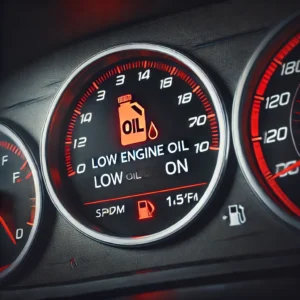
Regular oil changes, using the right type of oil, and following your car’s maintenance schedule can help prevent these issues and keep your engine running smoothly. Always pay attention to your car’s oil pressure warning light or gauge and address any concerns immediately to maintain your vehicle’s health and performance.
Why Your Engine Needs Adequate Oil Pressure
Adequate oil pressure ensures the engine’s moving parts, like pistons, bearings, and valves, get the lubrication they need. This helps minimize friction, prevent excessive wear, and dissipate heat during combustion. Without proper oil pressure, metal parts can make direct contact, leading to increased friction, premature wear, and potential engine failure.
Maintaining good oil pressure is crucial in auto repairs to avoid costly damage and keep your engine running smoothly. In addition to reducing friction and wear, proper oil pressure helps maintain the engine’s overall performance. It ensures that the oil reaches every part of the engine, providing a protective film that prevents the buildup of harmful deposits and sludge.
This is particularly important in modern engines, which operate at higher temperatures and pressures. Regularly checking and maintaining oil pressure can also help identify potential issues early, such as oil leaks or a failing oil pump, allowing for timely repairs.
Signs and Symptoms of Low Oil Pressure
Recognizing the signs and symptoms of low oil pressure is essential for timely intervention and preventing further damage. Common indicators of low oil pressure include:
- The oil pressure warning light on the dashboard
- Engine knocking or ticking sounds
- Decreased engine performance or power
- Increased engine temperature
- Visible oil leaks or excessive oil consumption
Causes of Low Oil Pressure
Insufficient oil level
One of the most common causes of low oil pressure is a lack of sufficient oil in the engine. This can occur due to various reasons, such as oil leaks, improper oil changes, or excessive oil consumption. When the oil level drops too low, the oil pump may not be able to circulate enough oil throughout the engine, leading to low oil pressure.
Oil pump failure
The oil pump is responsible for circulating oil throughout the engine’s lubrication system. If the oil pump fails or becomes damaged, it can result in inadequate oil pressure. Oil pump failure can be caused by wear and tear, debris or contaminants in the oil, or mechanical issues within the pump itself.
Oil filter clog
The oil filter is essential for maintaining engine health by removing contaminants and impurities from the engine oil. If the oil filter becomes excessively clogged or obstructed, it can restrict the flow of oil, leading to low oil pressure. Regular oil filter changes are essential to prevent this issue.
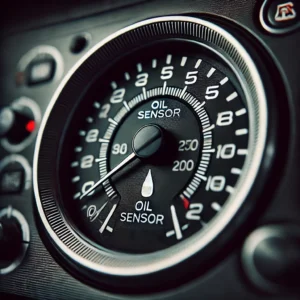
Worn-out or damaged oil pressure sensor
The oil pressure sensor is responsible for monitoring and reporting the engine’s oil pressure to the vehicle’s computer or gauge. If the sensor becomes faulty or damaged, it may provide inaccurate readings or fail to detect low oil pressure, potentially leading to unnoticed engine damage.
Engine wear and tear
Over time, the internal components of an engine can experience wear and tear due to normal usage and aging. This wear can cause increased clearances between moving parts, which can lead to reduced oil pressure. Factors such as high mileage, lack of proper maintenance, and harsh operating conditions can accelerate engine wear and contribute to low oil pressure.
External oil leaks
Oil leaks can occur in various locations within the engine, such as gaskets, seals, or even cracks in the engine block or oil pan. These leaks can allow oil to escape from the lubrication system, resulting in a gradual loss of oil and, consequently, low oil pressure.
Effects of Driving with Low Oil Pressure
Driving with low oil pressure can have severe consequences for your vehicle’s engine. Some of the potential effects include:
Increased Friction and Wear
Without proper lubrication, the metal components inside your engine will rub against each other more than they should. This increased friction can cause these parts to wear out much faster than normal and could lead to significant damage over time. It’s like trying to run without any oil on the gears – everything grinds down more quickly.
Overheating
Oil is essential for keeping your engine cool. When there’s not enough oil, your engine can overheat because the oil helps to dissipate the heat generated during combustion. Without it, the engine can’t manage the heat properly, which can lead to overheating and potential damage.
Bearing Failure
The bearings in your engine need oil pressure to stay lubricated and cool. If there’s not enough oil pressure, these bearings can seize up or fail. This could result in severe engine damage, as the bearings play a critical role in the engine’s operation.
Decreased Engine Performance
Low oil pressure can make your engine run poorly. You’ll notice that your car doesn’t have as much power, doesn’t get as good gas mileage, and produces more emissions. It’s like trying to run a race with no energy – your engine just can’t perform at its best.
Potential Engine Seizure
In extreme cases, if you drive with very low oil pressure, your engine might seize up completely. This means the engine would stop working altogether, and you would need to spend a lot of money on extensive repairs or even replace the engine. It’s a serious risk that can be avoided with proper oil maintenance.
Diagnosing and Fixing Low Oil Pressure
Check the Oil Level
Start by checking the engine oil level. To check the oil level, pull out the dipstick, wipe it clean, reinsert it, and then pull it out again. If the oil level is low, add the appropriate type and amount of oil as recommended for your vehicle. This is the first and simplest step to address low oil pressure.
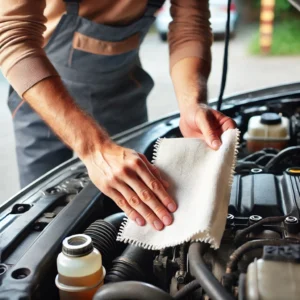
Inspect for Leaks
Thoroughly examine the engine and its surroundings for any visible signs of oil leaks, such as wet spots, stains, or drips. Look for wet spots, drips, or puddles under the vehicle, and check for oily residue on engine components. Look for drips or puddles on the ground, as well as any oil residue or stains around gaskets, seals, or other potential leak points. Identifying and fixing leaks can help maintain proper oil levels and pressure.
Replace the Oil Filter
A clogged or obstructed oil filter can restrict oil flow and contribute to low oil pressure. Replace the oil filter with a new, high-quality filter recommended for your vehicle. This ensures that oil can flow freely and helps maintain optimal oil pressure.
Check the Oil Pressure Sensor
Use a multimeter or diagnostic tool to test the oil pressure sensor for proper operation. A faulty sensor can give incorrect readings and may need to be replaced if it’s not functioning correctly. Ensuring the sensor works properly is key to accurate oil pressure readings.
Perform an Oil Pressure Test
If the issue persists, conduct an oil pressure test using a mechanical or electronic gauge. This will help determine if the oil pressure is indeed low and identify the underlying cause. An oil pressure test provides precise measurements and can help diagnose underlying issues causing low oil pressure.
Inspect the Oil Pump
If the oil pressure test indicates a problem, the next step is to inspect the oil pump. A worn or damaged oil pump may need to be repaired or replaced. The oil pump is crucial for maintaining proper oil pressure throughout the engine.
Check for Engine Wear
In some cases, low oil pressure may be a result of excessive engine wear, such as worn bearings or piston rings. This may require more extensive engine repairs or an overhaul. Identifying wear-related issues early can prevent further damage and costly repairs.
Consult a Professional Mechanic
If you are unable to diagnose or resolve the low oil pressure issue on your own, it is recommended to seek the assistance of a qualified automotive technician. They can perform a thorough inspection, run diagnostic tests, and provide the necessary repairs to restore proper oil pressure. Consulting a professional ensures that the problem is accurately identified and properly fixed.
Steps to Prevent Low Oil Pressure
To prevent the occurrence of low oil pressure and maintain the long-term health of your engine, consider the following preventive measures:
Regular Oil Changes
Follow the manufacturer’s recommended oil change intervals. This means changing the oil as often as suggested in your car’s manual and using the recommended type and quality of engine oil. Regular oil changes keep your engine running smoothly and prevent potential problems.
Maintain Proper Oil Levels
Regularly check your engine oil level. Take out the dipstick, wipe it clean with a cloth, insert it back into the tube completely, and then pull it out again to accurately check the oil level. Top it up if needed to ensure the oil level remains within the recommended range. Keeping the oil at the right level helps maintain good engine health.
Replace the Oil Filter as Recommended
Make sure to change the oil filter each time you perform an oil change to ensure optimal engine performance and longevity. A clean oil filter ensures optimal oil flow and filtration, which is crucial for keeping your engine running well. This small step can make a big difference in your engine’s performance.
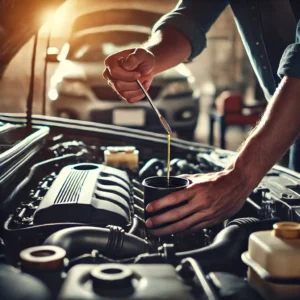
Monitor Oil Pressure
Pay attention to the oil pressure warning light or gauge on your dashboard. If it lights up or shows low pressure, address it promptly. Monitoring oil pressure can help you catch issues early before they become serious problems.
Avoid Harsh Driving Conditions
Minimize the strain on your engine by avoiding excessive idling, towing heavy loads, or driving in extreme temperatures or challenging terrains. Being gentle on your car helps it last longer and run better.
Perform Scheduled Maintenance
tick to the manufacturer’s maintenance schedule. This includes regular inspections, adjustments, or replacements of key engine components. Scheduled maintenance helps prevent issues and keeps your car running smoothly. For professional maintenance and repairs, consider Auto Repair Hurst TX.
Use High-Quality Replacement Parts
When replacing engine components, use genuine or high-quality aftermarket parts. This ensures proper fit and performance, helping your engine run efficiently and reducing the risk of future problems.
Frequently Asked Questions
What is the normal oil pressure range for my vehicle?
The normal oil pressure range can vary depending on the make, model, and year of your vehicle, as well as the engine type and operating conditions. Typically, the oil pressure should be between 20-80 psi (pounds per square inch) when the engine is running at normal operating temperature.
Can low oil pressure cause engine failure?
Yes, driving with consistently low oil pressure can lead to severe engine damage and even complete engine failure. Low oil pressure can cause increased friction, wear, and heat buildup, which can ultimately result in the seizing or catastrophic failure of engine components.
How can I tell if my oil pump is failing?
Symptoms of a failing oil pump include low oil pressure, increased engine noise (such as knocking or ticking sounds), and decreased engine performance. If you suspect an issue with the oil pump, it is recommended to have it inspected and tested by a qualified mechanic.
Can I drive my vehicle with the oil pressure light on?
No, it is not advisable to drive your vehicle with the oil pressure warning light illuminated. The oil pressure light indicates a potentially serious issue that requires immediate attention. Continuing to drive with low oil pressure can lead to extensive engine damage. It is best to pull over safely, shut off the engine, and have the issue diagnosed and repaired before attempting to drive the vehicle again.
How often should I change my engine oil?
The recommended oil change interval can vary depending on the make, model, and year of your vehicle, as well as the type of oil and driving conditions. Typically, it is recommended to change the engine oil and filter every 5,000 to 10,000 miles, or as specified by the manufacturer. Consult your owner’s manual or a trusted automotive technician for the optimal oil change schedule for your vehicle.
Conclusion
Understanding the causes of low oil pressure is essential for keeping your car in top shape and avoiding costly auto repairs. We know how critical proper oil pressure is for your engine’s health. Regular oil changes, using the right type of oil, and sticking to your car’s maintenance schedule are key steps in preventing issues like a low oil level, worn-out oil pump, clogged oil filter, or excessive engine wear.
When you notice low oil pressure, don’t wait! Bring your vehicle to Pit Stop Xpress. Our expert team will diagnose and fix the problem promptly, ensuring your engine runs smoothly and efficiently. We pride ourselves on providing top-notch auto repairs and exceptional customer service. By addressing low oil pressure causes early, we help you avoid more extensive damage and costly repairs down the road.
Pit Stop Xpress is your go-to destination for all your automotive needs. Our skilled technicians are dedicated to keeping your car in excellent condition, so you can drive with confidence. Don’t let low oil pressure compromise your vehicle’s performance. Visit Pit Stop Xpress today and let us take care of your car with the best service in the industry. Your car deserves top-notch care, just like you do!
End Note
Thank you for taking the time to read about the causes of low oil pressure and how to keep your engine in top condition. We are dedicated to providing the best auto repair & maintenance services to keep your car running smoothly and efficiently.
Visit Pit Stop Xpress for more information on how we can help with all your automotive needs. Check out our services to see the full range of what we offer, from regular oil changes to comprehensive diagnostics and repairs. Browse through our gallery to see some of the work we’ve done and meet the team that makes it all happen on our About Us page.
If you have any inquiries or wish to schedule an appointment, don’t hesitate to contact us. At Pit Stop Xpress, we’re here to provide you with the best auto repair & maintenance services, ensuring your vehicle stays in great shape and you stay safe on the road. Visit us today and experience the Pit Stop Xpress difference!


